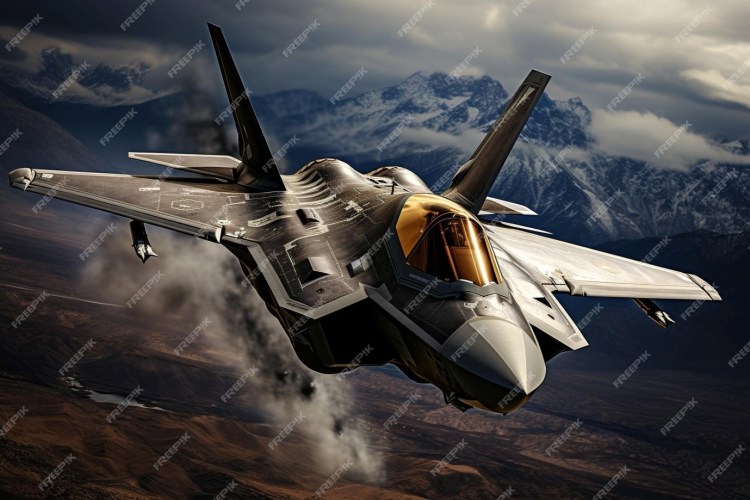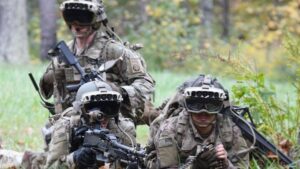Stealth is a Scam
“The first thing to know about stealth is, it’s a scam. It simply does not work. Radars that were built in 1942 could detect every stealth airplane in the world today. The Battle of Britain radars—not because there was anything great about them—but because they happen to have very long wavelengths. Every Battle of Britain radar would see the F-35, and the F-22 and the B-2. Now, I’m not talking as an antiquarian here because, unfortunately, the Russians picked up on this and have been building exactly those radars since World War II. They never stopped building low frequency, long wavelength radars and they have modernized them to an extraordinary extent. They sell ‘em to anybody who has cash.”– Pierre Sprey, designer of the F-16 Fighting Falcon and the A-10 Thunderbolt II, In an interview with The Fifth Estate
Introduction
Electronic Warfare is a broad subject. I’ve thought about how to write a series of articles about it. The only approach is the way one eats an 18-inch pizza—one bite at a time. So I’m going to break the topic into a number of smaller subjects. In my last article, available here, https://sofrep.com/news/electronic-warfare-101-irans-drone-strategy-against-israel-explained/, I introduced the basics of radar in the context of Iran’s April 13 attack on Israel. I showed that the media narrative, that Israel “humiliated” Iran because its air defense shot down 99% of Iran’s attack vehicles, was superficial. The reality was that Iran sacrificed its drones so Russia could map Israel’s entire air defense radar network in one night. I talked about the detailed metadata that permitted such mapping.
In this post, I will talk about WHY such mapping is important and how it is used. I will begin with certain aspects of stealth, proceed to certain aspects of radar, and then combine the two.
Pierre Sprey’s quote above is correct. Let’s talk about stealth and radar. Both topics are nuanced. Sales people and the media AVOID nuance in pursuit of a sound bite. If we want to appreciate what’s going on, we need to embrace the nuance.
Two Ways to Achieve Stealth
There are two ways to achieve stealth:
Structural stealth – stealth achieved through the physical design of an aircraft
Digital stealth – stealth achieved through electronic countermeasures
In this article, we will ONLY discuss structural stealth.
In 1962, Pyotr Ufimtsev, a Russian mathematician, developed a series of equations that allowed one to calculate the radar cross section (RCS) of an object based on its shape. An object’s RCS can be thought of as how big an object appears to a radar at a given distance. An F-16, for example, may have an RCS the size of a limo while an F-117 has an RCS the size of a marble.
The point is that both are visible to radar, but the F-16 is much more visible than the F-117. The F-117 can approach the radar much more closely before it is detected.
Lockheed used Ufimtsev’s equations and applied optimization to minimize the RCS of an airframe by tinkering with the airframe’s configuration. They arranged surfaces to deflect radar waves. The result was the angular F-117, the world’s first stealth aircraft, shown in Figure 1.
Figure 1. F-117 Night Hawk, designed by structural optimization
Defeating Radar
Read Pierre Sprey’s quote again. World War II radars can defeat the F-117 and all our modern, structurally stealthy platforms. Why?
World War II radars operated at low frequencies and long Very High Frequency (VHF) wavelengths (measured in meters) compared to modern radars (measured in centimeters). Unfortunately, this made them large and of relatively low resolution. The Germans could see British radar antennae from across the English Channel. Such large radars could not be made to fit on aircraft. There was a need for smaller radars with higher resolution.
To make radars smaller, radars were designed with shorter wavelengths and higher frequencies. The invention of the cavity magnetron during World War II made centimetric wavelength radar possible. Most modern radars work in the frequency and wavelength range of home microwave ovens. One finds hapless birds cooked if they perch in the way of radar antennae. Radars cook just as well as your home microwave. That’s how radars are built that fit into airplanes, yachts, and so on.
Now let’s put structural stealth together with radar.
Structural stealth is a math problem. Specifically, it’s an optimization problem, and one of the inputs is—the kind of radar the airframe is meant to defeat. You can’t solve the math problem and have the airframe defeat both low frequency and extremely high frequency radar. That range is too broad. So the airframe is optimized to defeat radars operating in the frequency bands and wavelengths it is most likely to encounter. And that’s the range your home microwave operates in, NOT the low frequency, long wave radar they used in the Battle of Britain.
The advantage of these short wavelength, high frequency radars is that they have higher resolution than long-wave radars. Some radars are configured for high power and low resolution, while others are configured for lower power and high resolution. For example, X-band radars have higher resolution than S-band radars. Both have higher resolution than VHF radars.
A long-wave radar will pick up the F-35 at long range. But if there are TWO F-35s close together, the radar’s resolution may only show one contact. So—the information the long-wave radar conveys is limited, but it knows a threat is out there.
What good is that? For one thing, it focuses attention. Second, the long-wave radar can hand over the contact to a shorter-wave radar that has higher resolution and greater ability to discriminate. The long-wave radar identifies the presence of a threat, and hands over range, altitude and bearing to the shorter wave radar. The high-resolution radar looks where the first radar pointed and sees two aircraft. It locks onto the two F-35s separately in order to guide air defense missiles to the targets.
Radar Frequencies
Radio waves and radar are part of the same electromagnetic spectrum we looked at in my articles on night vision. They are just different wavelengths and frequencies. Figure 2 shows the electromagnetic spectrum.
Figure 2. The electromagnetic spectrum, including visible light, infrared, and radar
Don’t worry too much about the numbers for now. The key observation is that frequencies increase from right to left, and wavelengths lengthen from left to right. Our eyes “see” the visible color spectrum. Night Optical Devices see in the Near Infrared. Further to the right are microwave ovens and most radar. Far to the right are the long-wave radars that can detect stealth.
A good place to see what radars make up an air defense system is an Aegis destroyer. It has antennae for X-band, S-Band and certain lower frequencies. The Aegis SPY-1 radar is operates in S-Band.
These terms are ways of classifying wavelength and frequency ranges. Let us put some numbers to them. Frequencies are measured in Hertz. Megahertz (MHz) is a million Hertz and Gigahertz (GHz) is a thousand million Hertz. Examine the numbers in Table 1.
Table 1. Devices with corresponding frequencies and wavelengths
A complete table would extend the length of the page. This table shows enough of the spectrum to make the point. We see from Table 1 that S-band radars operate in the same range as home microwave ovens. We also see that as frequencies increase, wavelengths decrease. Higher frequency, shorter wavelength radars are crucial for target discrimination and tracking. However, structural stealth is optimized to defeat these radars. Stealth is vulnerable to detection by long wavelength VHF radars.
How is EW mapping used?
Now, on April 13, the Russians and Iranians were mapping the location and types of radars in the Israeli/coalition air defense network. Now they know where the radars are, what frequencies they use, which are low-resolution acquisition radars, which are high-resolution targeting radars and so on. This is for use next time, when Iran launches a serious attack.
We do the same. Here’s an example of a serious attack of the type we carry out. US and UK EW aircraft fly up and down the Black Sea, off the coast of Crimea. They gather information on Russian radars. Ukraine launches stealthy British Storm Shadow or French SCALP missiles (see Figure 3) at the Russian naval base at Sevastopol. Targets are selected using satellite imagery. Russian air defense shoots down eight of ten missiles, but two get through and sink a Russian landing ship.
How did that happen? The Storm Shadows and SCALPs didn’t fly a straight line. The US and UK drones and EW aircraft mapped all the Russian radars they could find. Their locations, wavelengths, and frequencies. Their search fans, fields of overlap, and potential holes. That information was used to program the missiles to fly evasive slaloms through holes in the Russian air defense. Where possible, we jammed Russian radars to create holes.
Note that Russia doesn’t have their radars on all the time. Nobody does. That’s why our EW assets have to be constantly in the air, scraping information together. It’s rare for an entire air defense network to be lit up like the Israeli/coalition network was lit up on April 13. That’s why the attack of April 13 provided such a great opportunity.
Figure 3. British Storm Shadow Low-Observable Missile (French SCALP)
Let’s not be dainty. The Ukrainians don’t have the expertise, satellites or EW assets to identify targets, gather radar intel, analyze it, and program evasive courses into the missiles. They just don’t. That ship could not have been destroyed without our satellites identifying targets, our EW aircraft gathering radar PDW data, our analysts mapping the holes in Russian air defense, and our technicians programming the missiles’ guidance. The Russians know this. Whenever Jens Stoltenberg protests that “We are not involved,” anyone with an understanding of the technology does an eye-roll.
Similarly, the Iranians didn’t have the EW assets to map all Israeli/coalition air defense on April 13. That’s why the Russians helped with EW assets based in Syria. That’s the shadow war obscured by the media narrative.
The Kill Chain
The first stealth platform destroyed was an F-117 shot down during the NATO campaign against Serbia. The F-117 was detected by legacy VHF Spoon Rest and Low Blow radars and was shot down by a SAM-3. 1960s technology. This success spurred Russia to invest in improved VHF long-wave radars.
All effective air defense radar networks consist of various radars covering a range of frequencies. As Pierre Sprey indicated, the Russians have been developing long-wave anti-stealth radars for decades. These radars are integrated into their S-400 and S-500 air defense systems. In fact, it is fair to say that the effectiveness of those systems is more a function of their radars than their missiles.
Russia has developed long-wave radars that are mobile. They can move them around and deploy in minutes. The video below introduces Russia’s NEBO-M radar system. It is a mobile, multi-band radar complex (see Figure 4). Note that only the VHF radar is shown in the video. There are two other radar vehicles and a command vehicle in the radar unit.
The NEBO-M can detect the F-35 at a range of 1,000km or 625 miles. To do this, it uses VHF radar. Look at Table 1. This is a long-wave low-discrimination radar and will hand-off its contacts to shorter wave targeting radars as the F-35s close the range. For this purpose, the NEBO-M system has S and X-band radars in its suite that cover the shorter wavelength ranges of the spectrum. This hand-off creates what is called a “kill chain.” The kill chain is critical to the effectiveness of Russian air defense.
Figure 4. NEBO-M anti-stealth radar. Antennae collapses onto a vehicle for transport.
I hope this article, and my last, have given the reader a better appreciation for the nuances of radar and stealth. Sprey’s statement that “stealth is a scam” is sensational, but mostly true. I say “mostly” because, having said all this, a smaller RCS is still better than a larger one. A good question is whether that reduction in RCS is worth the high cost of a structurally stealthy aircraft that can be detected by a World War II radar. We will explore this subject further in later posts.
Cameron Curtis
Cameron Curtis has spent thirty years on trade floors as a trader and risk manager. He was on the trade floor when Saddam’s tanks rolled into Kuwait, when the air wars opened over Baghdad and Belgrade, and when the financial crisis swallowed the world. Having written fiction as a child, he is the author of the Breed action thriller series, available on Amazon.
Check out his new Breed thriller, BLOOD SPORT, here:
https://www.amazon.com/dp/B0D6RC5V4V
On September 29, BLOWBACK, Breed Book 10, will be released.
—
Disclaimer: SOFREP utilizes AI for image generation and article research. Occasionally, it’s like handing a chimpanzee the keys to your liquor cabinet. It’s not always perfect and if a mistake is made, we own up to it full stop. In a world where information comes at us in tidal waves, it is an important tool that helps us sift through the brass for live rounds.



